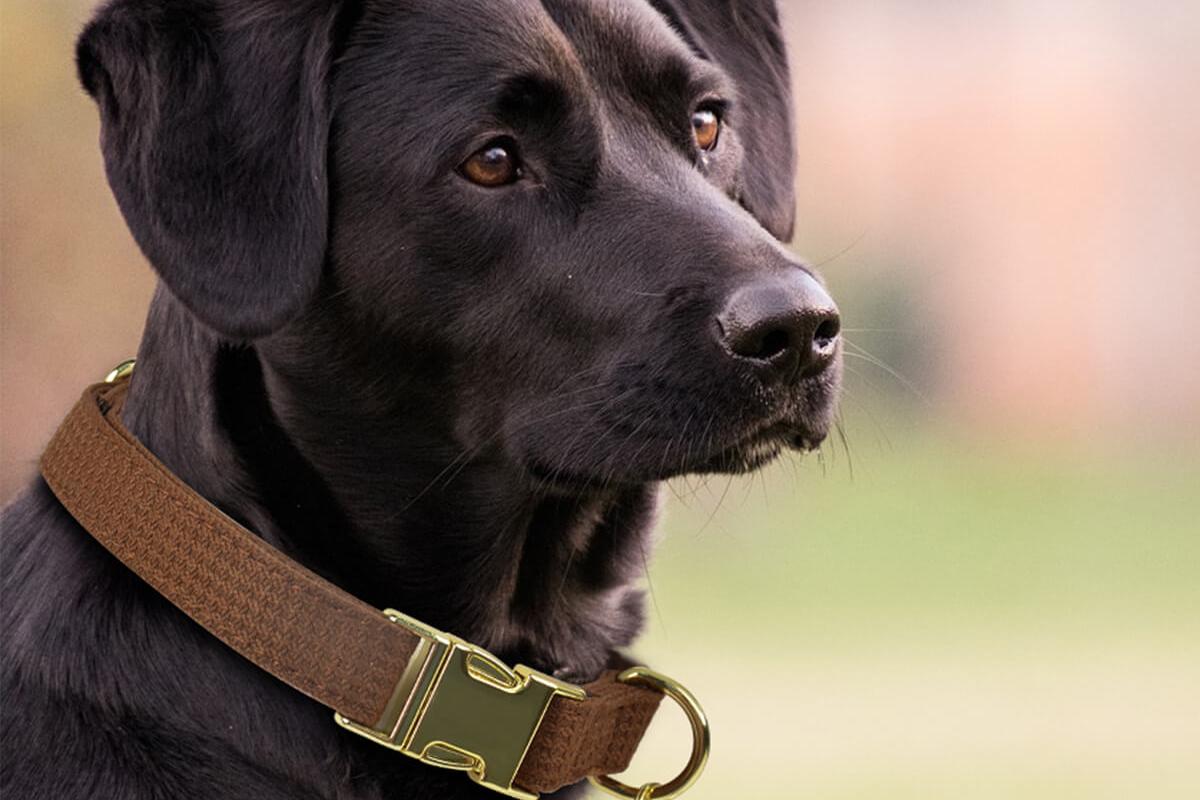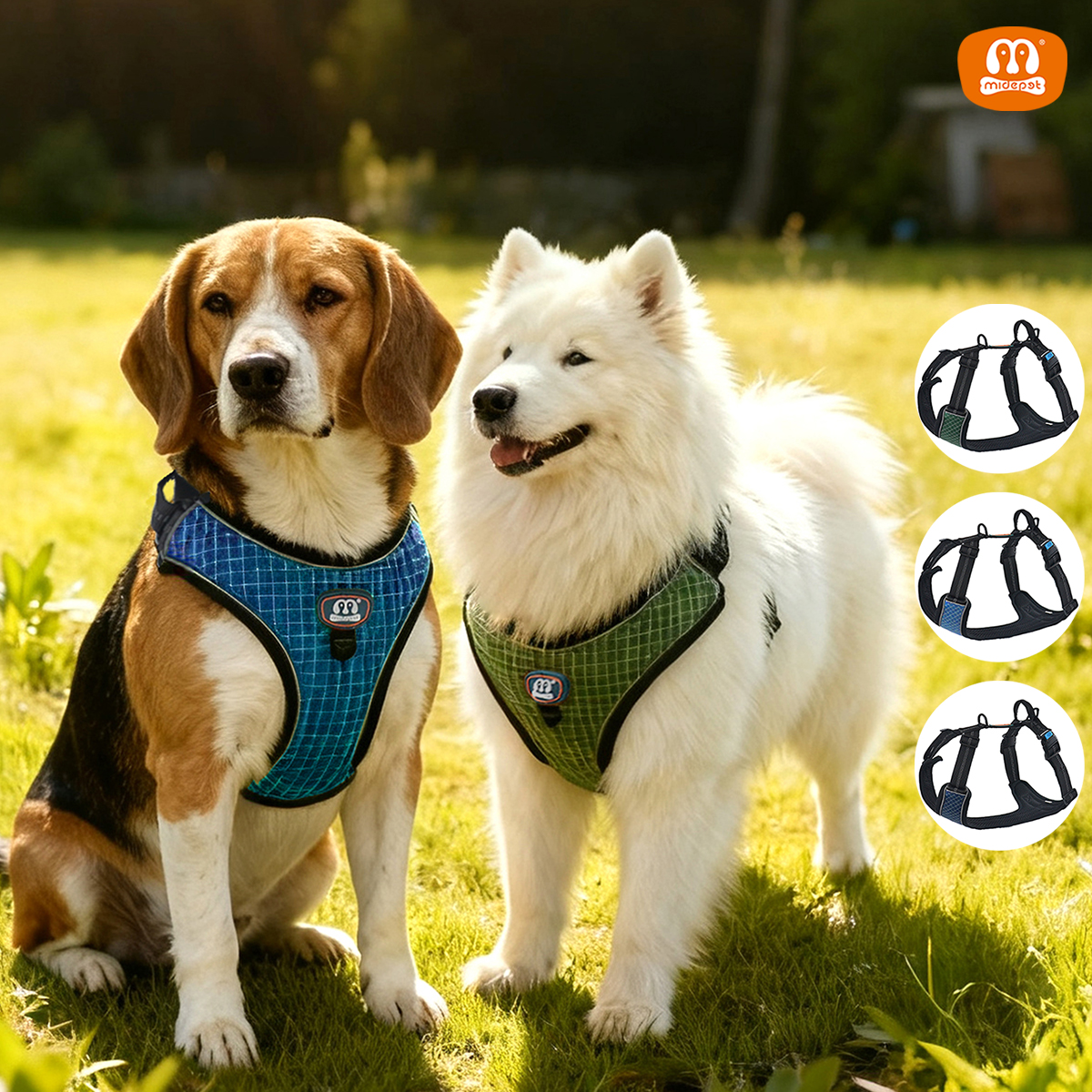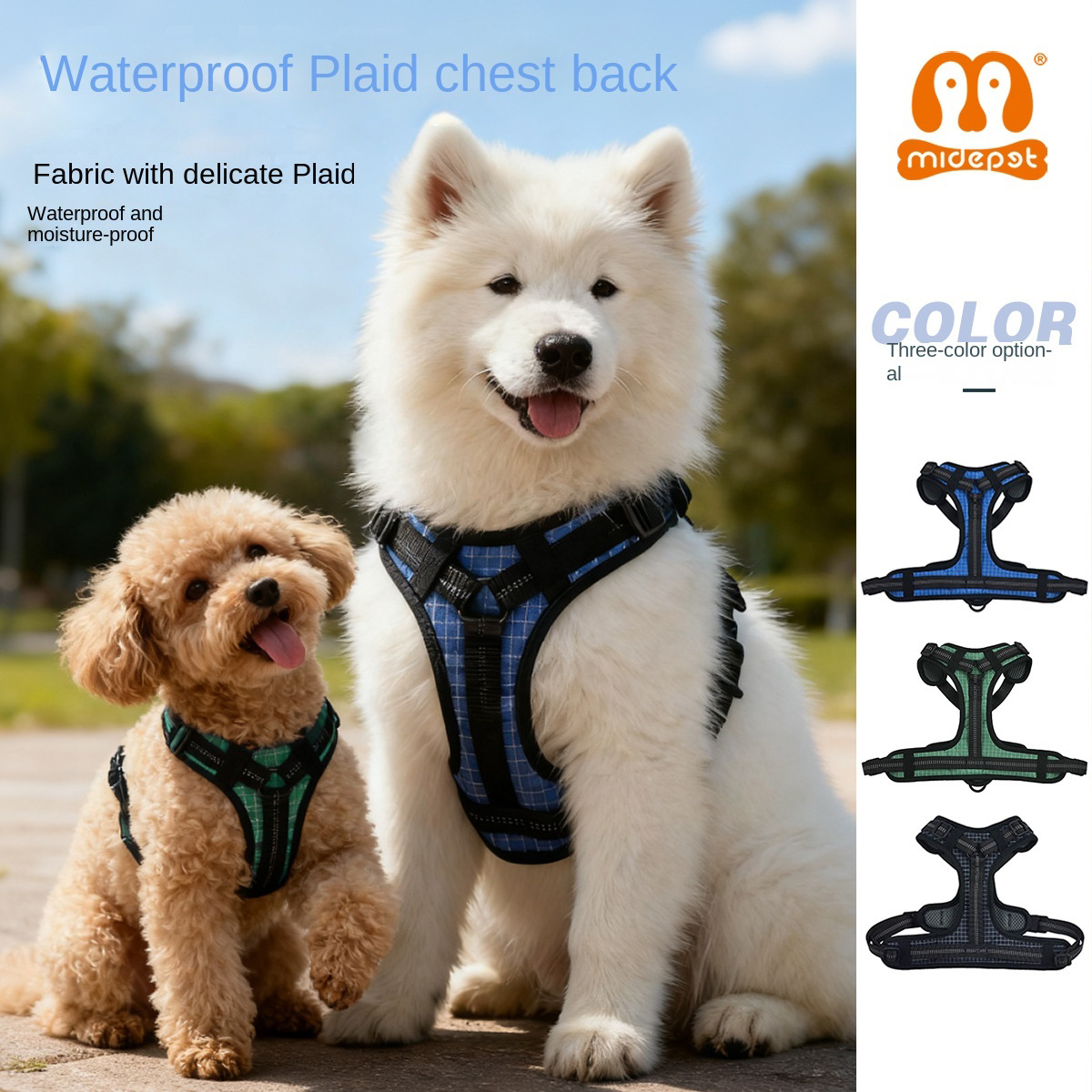Hiking With Your Dog: A Checklist of Everything You Need for Your Big Day Out
Hiking with Dogs: A Complete Checklist for a Safe and Fun Adventure
Hiking with your dog can be a rewarding way to explore nature, strengthen your bond, and keep both of you active. Whether you're venturing through forest trails or climbing mountains, your furry friend will love the new sights, sounds, and smells. However, it’s important to be well-prepared for these adventures. From selecting the right hiking dog leash to packing essential supplies, being ready will make the experience enjoyable and safe.
Why It’s Important to Prepare for Hiking with Dogs Preparation is key when heading outdoors with your dog. Having the right equipment ensures safety, comfort, and overall well-being. It's also crucial to consider your dog's breed and health, as not every dog is suited for long hikes. In this guide, we’ll discuss everything from the best dog harness, leash, and collar options to how to keep your dog comfortable during the hike.
Essential Gear for Hiking with Dogs
Hiking Dog Leash A sturdy, durable dog leash is vital for controlling your dog in outdoor environments. For hiking, a hands-free dog leash is often recommended, allowing you to keep your hands free for balance or to handle gear. You can also opt for retractable or adjustable leashes for more flexibility, depending on the trail.
Water and Food Supplies Always bring enough water for both you and your dog. A collapsible water bowl is a great addition, allowing your dog to hydrate easily during breaks. Don’t forget to pack high-energy dog treats or food, especially for longer hikes, to keep your dog’s energy levels up.
Dog Hiking Shoes In rugged or hot terrain, dog hiking shoes can protect your dog's paws from sharp rocks, thorns, or heat. Not every dog needs them, but it’s good to have them on hand if your dog will be walking on tough surfaces.
Dog Backpack If your dog is capable, you can fit them with a lightweight dog backpack where they can carry some of their own essentials, like water, poop bags, or small snacks. Just make sure not to overload them—dogs should only carry about 10% of their body weight.
Dog Poop Bag Holder Keeping nature clean is crucial. Always pack dog poop bags and a holder to dispose of waste properly. Many trails have limited disposal areas, so it’s essential to clean up after your dog and take the waste with you if necessary.
Dog Harness A well-fitting dog harness is often more comfortable than a collar, especially for active dogs. It also provides better control without putting pressure on your dog’s neck, which is helpful on steep or rocky paths.
Dog Clothing and Blanket Depending on the weather, pack a waterproof dog jacket to keep your dog warm and dry in rain or cold conditions. A lightweight blanket can also be useful to dry off your dog or give them a comfortable place to rest during the hike.
First Aid Kit Accidents happen, and it’s smart to be prepared with a basic dog first aid kit. Items like bandages, antiseptic wipes, and tweezers (for ticks or thorns) should be part of your pack.
Choosing the Right Dog for Hiking
Not all dogs are built for hiking. Breeds like Labrador Retrievers, Border Collies, and Australian Shepherds are known for their stamina and agility, making them excellent hiking dogs. Older dogs or dogs with health conditions might need shorter, easier hikes. Always monitor your dog’s condition to ensure they are comfortable and safe.
Age and Health Younger dogs with lots of energy tend to do better on long hikes. For older or less active dogs, choose shorter trails that match their fitness levels. Always consider a check-up with your vet to ensure your dog is physically fit for hiking.
Signs Your Dog Isn’t Ready for Long Hikes Look for signs of fatigue, such as heavy panting, limping, or a lack of enthusiasm. These could indicate that your dog isn’t suited for long or strenuous hikes. Make sure to start slow and gradually build your dog's endurance over time.
Hiking Etiquette with Dogs
Leash Rules Even if your dog is well-trained, always follow the leash rules of the trail. Keeping your dog on a hiking dog leash ensures that they won’t disturb wildlife, other hikers, or get into dangerous situations.
Meeting Other Hikers or Wildlife If you encounter other hikers, keep your dog close and ensure they don’t jump or act aggressively. Wild animals can also be a distraction for dogs, so a leash will help you maintain control during encounters.
Clean Up After Your Dog Always pack enough dog poop bags and take them with you. Leaving dog waste behind can harm the environment and wildlife, so be responsible for cleaning up and disposing of it properly.
Safety Concerns When Hiking with Dogs
Keep Your Dog Cool On warm days, ensure your dog has access to plenty of water and shade. If they show signs of overheating—such as excessive panting, drooling, or lethargy—stop the hike and cool them down immediately.
Identifying Trail Hazards Sharp rocks, cliffs, snakes, and poisonous plants can all pose risks to your dog. Keep an eye on the trail ahead and guide your dog through potentially dangerous areas.
Emergency First Aid A well-stocked first aid kit is essential. Be prepared to handle cuts, insect stings, or sprains. For more serious injuries, know the nearest veterinary clinic before heading out.
Training Your Dog for Hiking
Recall Training Reliable recall is crucial when hiking. Your dog should respond to commands quickly, especially in areas where they are allowed off-leash.
Building Endurance Gradually increase the length and difficulty of hikes to build your dog’s stamina. Start with easy trails and work your way up to more challenging routes as your dog gets used to longer hikes.
Adapting to Different Terrain Expose your dog to a variety of surfaces—grass, rocks, mud, and streams—so they can navigate different types of terrain safely and confidently.
Finding Dog-Friendly Hiking Trails
Before hitting the trails, research whether your chosen route is dog-friendly. Many national parks in the U.S. don’t allow dogs, while others may have restrictions on where dogs can go. Always check ahead and plan your hike on trails that welcome dogs.
Popular Dog-Friendly Hiking Trails Many state and local parks allow dogs, but each location has its own rules. Look for parks with open spaces, gentle terrain, and plenty of shade.
Permits and Restrictions Some trails may require permits for pets, so be sure to verify what’s needed before you go. Be mindful of restrictions, such as areas where dogs must stay leashed at all times.
Check with Your Vet Before Hiking
Vet Check-Ups Before embarking on a hike, consult your vet to ensure your dog is healthy enough for physical activity, especially for long or strenuous hikes.
Monitoring Your Dog’s Health on the Trail During the hike, keep an eye on your dog’s physical condition. If they start to limp, pant heavily, or show signs of fatigue, stop and take a break. Hydration and regular breaks are key to keeping your dog healthy on the trail.
Conclusion
Hiking with your dog can be a wonderful experience for both of you if done safely. By preparing with the right gear like a sturdy hiking dog leash, dog harness, and other essentials, you ensure that your outdoor adventure is both fun and safe. Always prioritize your dog’s comfort, health, and safety to create lasting memories on the trail.









